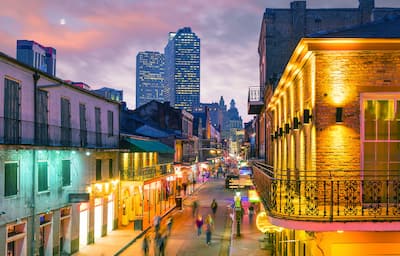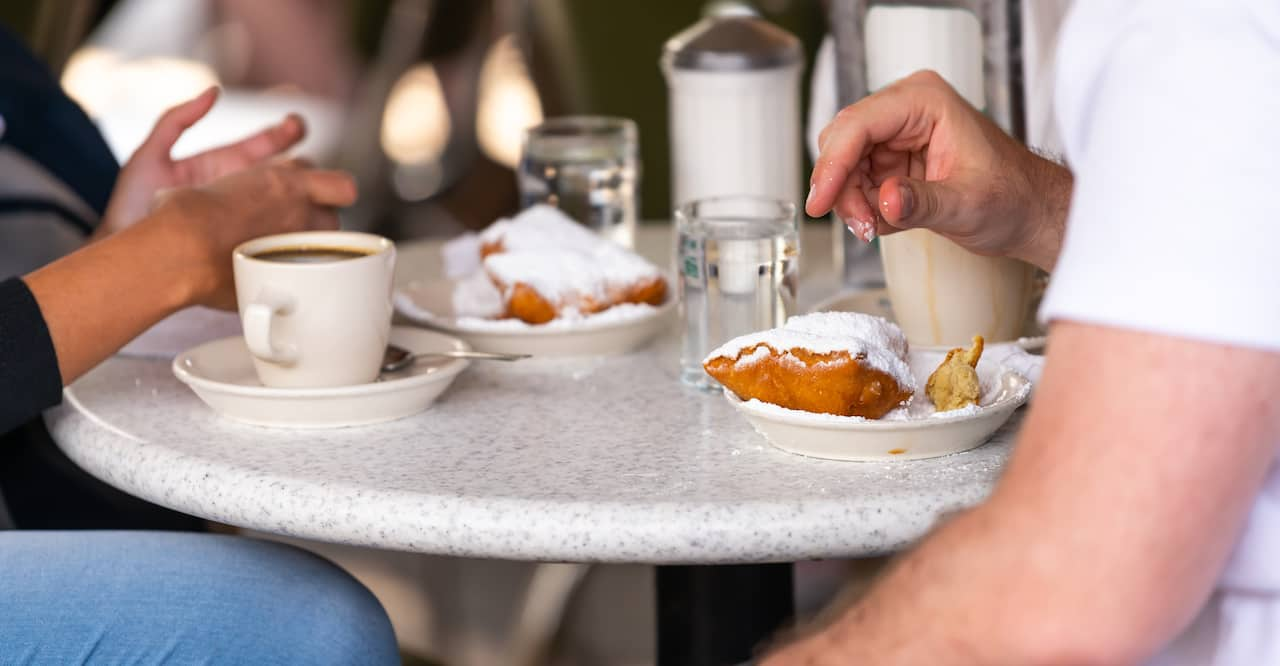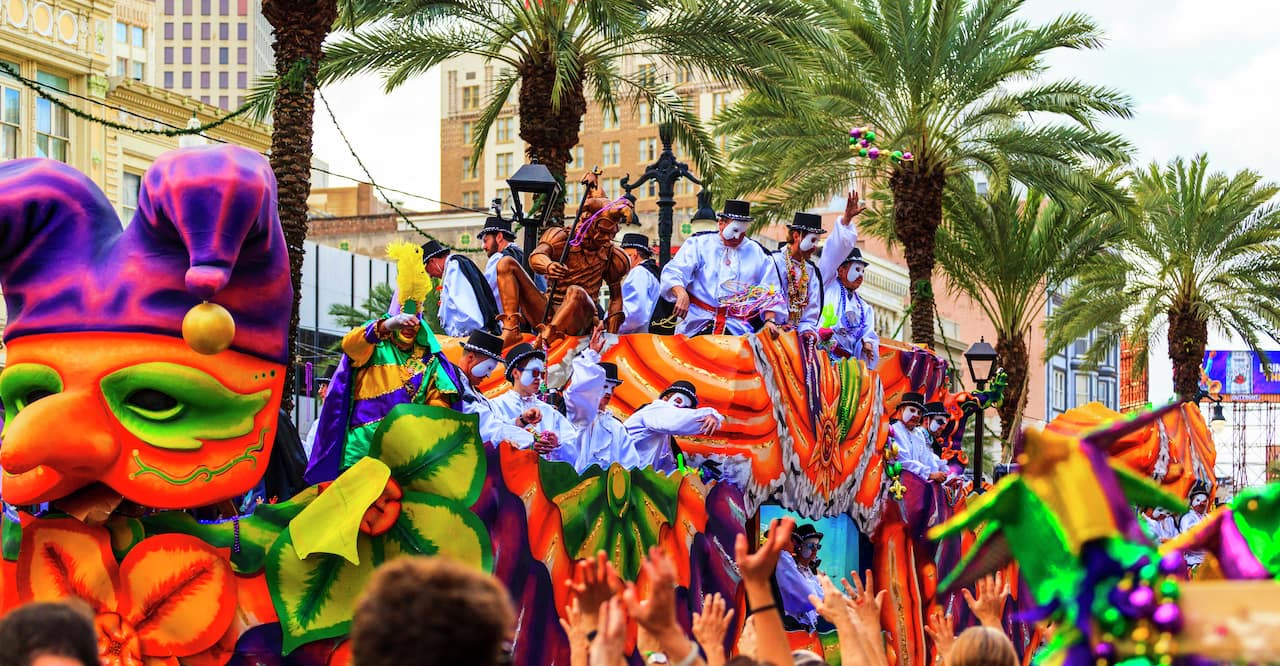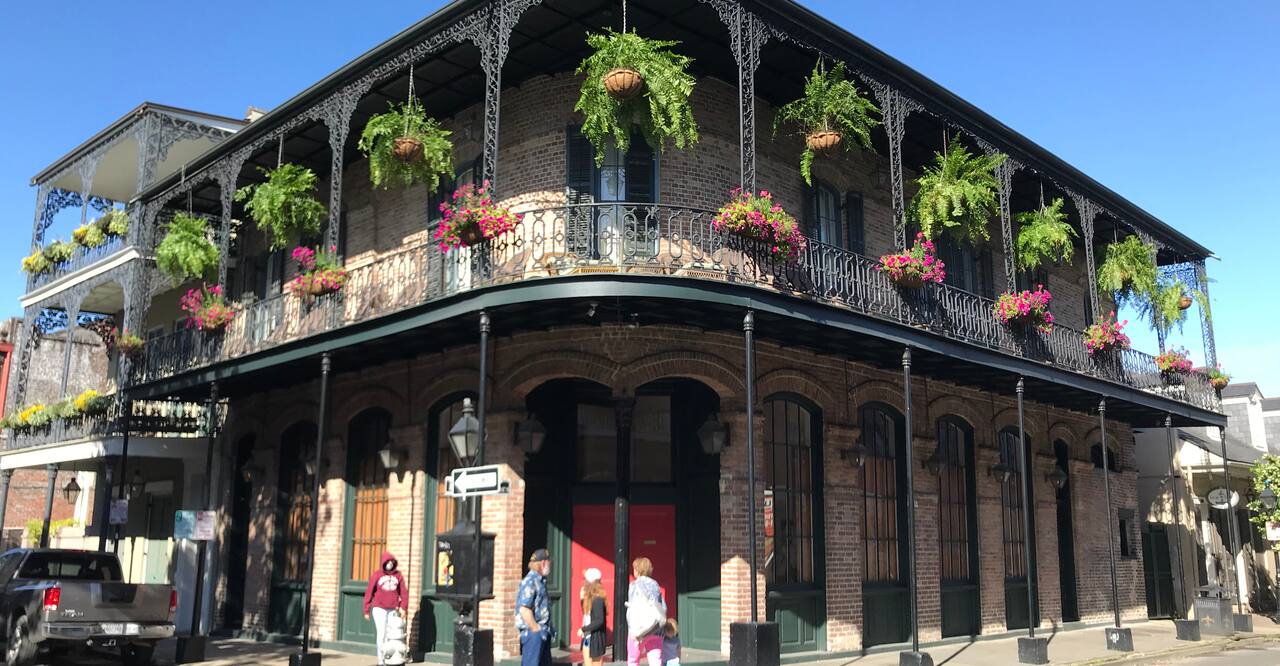
A Traveling Insider's Guide To New Orleans
Navigate your next New Orleans vacation with our expert guide to the Crescent City. | By Paul Oswell | June 17, 2022
Welcome to New Orleans, a destination with a big reputation and a small-town feel. European, Caribbean and African influences throughout its history have resulted in a city unlike any other in the United States. It enthusiastically celebrates life, through its music, cuisine and festivals, with Mardi Gras in the mix for the title of the biggest free party on Earth. More than 300 years of tradition is present in the touristic hub of the French Quarter, decadent mansions line the Garden District and jazz and brass bands burst forth from the Treme neighborhood. Cajun and Creole recipes make the city a beloved culinary beacon, and with parades for everything from weddings to funerals, residents have raised everyday life to an art form. Known as Crescent City of the Big Easy, New Orleans is vital and proud, and welcoming to anyone with even a small sense of adventure.
Here are some ideas to make memories in NOLA:
Eat out: Feast at restaurants serving traditional and updated versions of famous Creole and Cajun dishes
Listen up: Live music radiates from the streets downtown, from the jazz clubs of Frenchmen Street to the brass bands that set up on a street corner
Step out: Mardi Gras has almost a month’s worth of parades, plus there are music festivals all year round
Why visit New Orleans?
New Orleans’ reputation as being unlike any other American city is well founded. It has world-class culinary and musical scenes that are indigenous to the city, and 300-year-old architecture that you won’t find anywhere else. The French Quarter is almost a living museum, hospitality means 24-hour bars and diners, and the festivals make for near-constant celebrations, even outside of Mardi Gras. New Orleans aims to delight all your senses. As the most famous local saying goes, “Laissez-les bons temps roulez!” - Let the good times roll!
Walk a lap of Jackson Square. Brass bands play, and tarot card readers sit at tables in the shadow of St. Louis Cathedral. The square is framed by the 18th-century Cabildo museum, restaurants and art galleries. Towards the river, Cafe du Monde serve up beignets as they have done every day since 1862.
The French Quarter is like a movie set. Hanging baskets of tropical flowers adorn the famous wrought-iron balconies, and buildings - some dating back to the 1700s - have been preserved. Notable stops include the historic French Market (established 1791) and one of the oldest French restaurants in America, Antoine’s Restaurant (1840). For a more modern setting, head to Bourbon Street, which cuts a neon swathe through the neighborhood.
When is the best time for your trip to New Orleans?
Weather in the city can be extreme at times, but from February to May, it's at its best. This is also when most of the major festivals are, including Mardi Gras, which happens in relation to when Easter falls each year. The heat and humidity get more intense over the summer, which also includes hurricane season (with its peak in September). Prices are cheap, though, and the city is quiet, so summer has some advantages. Fall and winter are usually mild, and Halloween especially is a good time to visit for its costumed celebrations. Locals are resilient to whatever the weather throws at them, so most events go right ahead — a little rain doesn’t dampen the spirits too much in these parts.
Getting to and around New Orleans
The layout of New Orleans can be confusing at first. Forget the usual directions of north and south, locals here refer to uptown and downtown, lakeside and riverside. The French Quarter is a grid, but almost everywhere else meanders along with the curves of the Mississippi. Once you know the orientation of the main streets (Canal, Saint Charles Avenue, Magazine and Carrollton Avenur) everything else falls into place, and at any time if you know where you are in relation to the river, you should be in good shape.
The city is served by Louis Armstrong New Orleans International Airport. It’s a twenty minute drive from downtown and although public transportation options are restricted to two bus services, cabs and ride share cars into the city are reasonably priced. There’s also an affordable airport shuttle that makes the rounds of hotels downtown.
New Orleans is flat, and looks good for hiring a bicycle, but the roads often have potholes, so care is necessary. Car rentals aren’t really needed and parking downtown is always a hassle, so forgo this if you can. Outside of the height of summer, New Orleans is a very pleasant city to walk around, so bring some comfortable shoes and take a stroll while taking in the architecture and street music.
New Orleans culture and customs
The culture in New Orleans is unlike any other city in America. There are strong European, African and Caribbean influences, and throw in Catholicism, Vodou and an all-encompassing event such as Mardi Gras and you have quite the heady mix. Tap into local life here, with all of its traditions and superstitions, and you’ll find instant community and warmth like nowhere else.
Paul Oswell is a British award-winning journalist and published travel author based in New Orleans, Louisiana in the United States. His books include Bucket List North America and The Great American Road Trip, as well as New Orleans' Historic Hotels. He has also been an editor of and contributor to several guide books/editions published by Dorling Kindersley (owned by Penguin), including New Orleans, Florida, Orlando, Los Angeles, California and The United States. His work has appeared in Conde Nast Traveler, Travel & Leisure (both of which he has written multiple online travel guides for) and The Guardian, as well as dozens of international newspaper and magazine titles, and inflight magazines for major airlines.
Property spotlights
Read more:
Find travel inspiration


